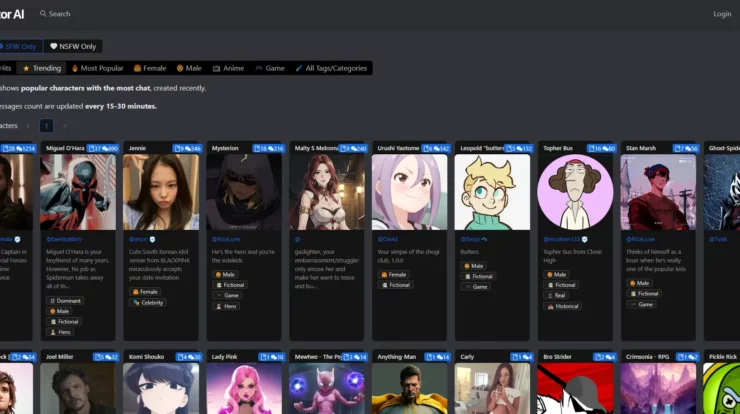
In April of 2022, an article appeared in the Independent about a group of American doctors who were saving Ukrainian lives by performing remote surgeries. Using Zoom and other video conferencing software, these doctors have been guiding medics in Ukraine, treating injured civilians and saving lives. This is just one example of collaboration using technology in healthcare to save lives.
During the COVID-19 pandemic, when we were all locked down, technology became core to healthcare collaboration. Medical professionals were doing everything they could to use the tools at their disposal to minimize the spread of the disease, and this eliminated a lot of the face-to-face contact that patients have traditionally relied on within the clinical setting. There was a huge jump in telehealth numbers, where patients, rather than going into ERs to get treatment, could consult through video chat, get diagnosed, and have prescriptions issued online.
Nursing teams have been at the forefront of telehealth. Those who have studied for a Master of Science in Nursing, for example, learn how to provide primary care using the latest technologies. One of the core themes covered in the curriculum at Walsh University, for example, is Healthcare Technology, which imparts the fundamentals of technology in nursing. The course teaches nurses not just the benefits of these technologies but how they can be applied in different settings.
Whatever nursing course one plans to undertake, it is important to have an idea of the role of technology in healthcare. How is it enhancing collaboration, not just for nurses, but within teams in general?
More effective communication
This is one of the biggest advantages that technology has introduced to healthcare. In the past, if a doctor or nurse needed to access patient records, they had to look for a paper file. In the last 20 or 30 years, advances in computer systems allowed records to be stored in local area networks.
Today, in most modern hospitals, patient records are stored in clouds and anyone with access rights can read them from wherever they are. If a patient is referred to a doctor for specialized treatment, for example, it does not matter what part of the world they are in. They can access patient history simply by logging into the cloud and typing in the patient’s name or unique number.
Better coordination between care teams
Healthcare is shifting towards patient-centered care, where rather than have a patient treated by just a doctor and a nurse, care teams come together, each member bringing their special expertise to the table to prepare a comprehensive care plan that delivers wholesome treatment.
These teams need to be in constant communication. If they can communicate fluidly, they can deliver treatments and therapies faster and more effectively. Technology allows for seamless communication between all members of care teams. All information is uploaded to a central location where everyone can access it. It eliminates the need for endless meetings, and time is better spent attending to patients.
Patient engagement is easier
Imagine a patient is in a hospital ward being cared for by a team. Because they are receiving patient-centered treatment, they are allowed to participate in their treatment, giving their opinion on how they wish to be cared for and whether the treatments they have been administered are working.
With the latest technologies, all the team has to do is provide a password and username to the patient so that they can access all their information in the cloud. They can see everything that has been done to make them better, and they can give feedback to the care team.
System integration is easier
Technology allows us to link networks within and between hospitals. There was a time when although hospitals had computerized their records, they were not able to link different departments. If a doctor ordered an X-ray, for example, he would have to log into the radiology database to see the results. If they ordered an ECG, the results were available on a different system. It was a cumbersome and time-consuming way of working.
Today, all these departments can be linked using simple code, so that the doctor only needs to log into one system to access all information about a patient. Not only does it introduce efficiency, but it also eliminates errors, which can be costly in a clinical environment. Collaborating hospitals can also share information through cloud computing, allowing for easy communication and more efficient and effective treatment of patients.
Automates procedures
Technology is all about making workflows easier, and in healthcare it has automated tasks that were completed manually in the past.
Today’s doctors and nurses have eliminated many tedious tasks, handing them over to systems that function independently. Whatever time they save is used to attend to patients, improving the quality of care and patient satisfaction.
Reduced congestion and waiting times in the ER
Imagine if every time you went to the ER, the nurses had to access a paper file for you from a huge room full of files. There was a time when this was standard procedure, and it led to delays in administering treatment, sometimes with dire consequences.
Today, using telehealth, patients can book their appointments at home, get a time slot to see a doctor and when they arrive in the ER be attended to right away because their visit has already been logged into the system.
Healthcare teams that utilize the latest technologies can deliver treatments much faster and they tend to report higher patient satisfaction rates.
Everyone in the care team has access to the same information
Since all information regarding a patient is in one central location, everyone has the same information, and they can prepare the best treatments and interventions. This is important as it reduces the risk of error and improves efficacy in treatment.
‘Improved error spotting
Errors within a clinical setting are not unheard of, but in facilities that rely on the latest technologies, they are easier to spot and correct, leading to better patient outcomes.
If patient records are scattered all over the hospital it is easy for mistakes to occur — healthcare professionals in different departments often do not have time to compare notes. However, if a nurse or doctor can see everything about a patient on a single computer screen, it is easier to spot and correct errors.
Practitioners can work smarter
Because technology allows for information to be shared, nurses, doctors and other healthcare professionals have all the information they need to design the most effective treatments.
On a single platform, they can collaborate with researchers, pharmacists, scientists, and others who are crucial in delivering treatments for chronic illnesses.
With technology, the patient is always at the forefront
Medical platforms today are built with the patient front and center. The patient is the customer, and platforms are created to facilitate their care before all else. Every professional who is on these platforms must learn to always think about the patient first before all else.
These platforms are also simple enough to be understood by the patients themselves, allowing them to contribute their opinions and feelings about the treatment they receive.
Technology has made collaboration between teams in healthcare easier and has allowed for patient-centered care that is delivered efficiently and effectively. It has automated otherwise time-consuming tasks and allowed for better communication between doctors, nurses and other professionals.


